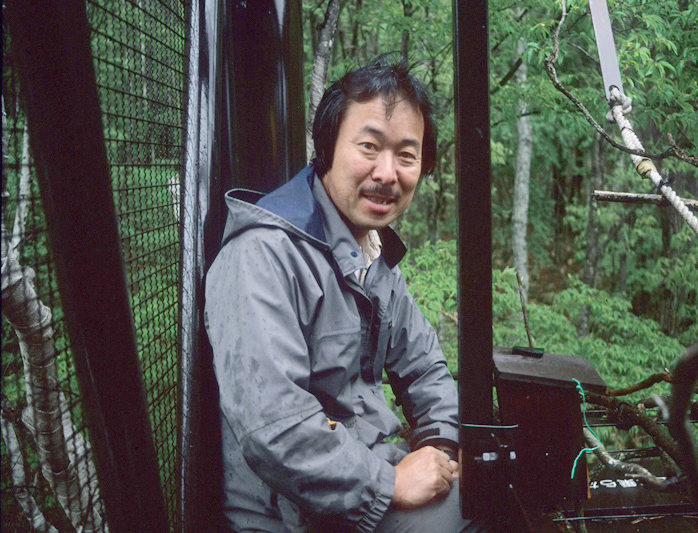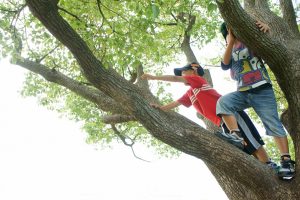
What we want to cherish are "dormouse", "living things" and "people".
Do you know "Japanese Dormouse"? It is a small mammal with round eyes, a black streak on its back, and a tail covered with soft hair. In Japanese forests, they use the branches as the roads and run under the branches, and they eat pollen, nectar of flowers, soft fruits, and small insects on the back of the leaves. The weight of a Japanese Dormouse is only about 18 grams, which is less than half the weight of 50 grams of chicken eggs. They communicate with ultrasonic waves on the trees in the dark night and survive while avoiding the natural enemy such as owls.
Their oldest fossils have been found in Germany in the strata about 50 million years ago. The ancestors of Japanese Dormouse came from Europe long time ago, crossing the branch roads, and came to live in Japan about 5.1 million years ago. So, Japanese Dormouse is the oldest mammal in the Japanese archipelago and is a living fossil.
They don't eat anything for 6 months, and don't pee or poop, and stay in winter in Yamanashi prefecture. Moreover, while lowering the body temperature to about 0 ° C, they are sleeping under the snow that softens changes in the environmental temperature. But now, global warming is reducing snow and threatening the dormouse's mild hibernation.

In addition, Japan faces the danger of forest division due to road construction, habitat loss due to development, and habitat deterioration. We are conducting our research to protect such dormouse. We are focusing on dormouse conservation, as we are developing an Animal-pathway for arboreal animal pedestrian bridges. Would you like to know more about the dormouse, a “representative player” who conveys the importance of the forest, which is such a cute and mysterious living, a symbol of the forest? Please join the activities to protect the forest with the dormouse.
Plants, animals and microorganisms live around us and on the earth. Just as we can breathe thanks to the oxygen produced by plants, we cannot live without "living things." People live on the blessings of "living things" in terms of air, food, clothing, and fuel. Therefore, protecting "living things" leads to protecting "people".
In addition, by interacting with, experiencing, and observing "living things," children's sensibilities, curiosity, and kindness will grow more and more. It's like a "teacher" who nurtures children's emotions.
We want to protect the rare species of living things and at the same time cherish ordinary "living things". This is because ordinary "living things" are responsible for the ecosystem of the area.
 The "living things teachers" raise and heal children and people in region. Also, it is important to monitor ordinary "living things" have not fallen into an endangered species, just as Medaka fish , which used to be normal before, but now become "extinct species".
The "living things teachers" raise and heal children and people in region. Also, it is important to monitor ordinary "living things" have not fallen into an endangered species, just as Medaka fish , which used to be normal before, but now become "extinct species".
Next, we also aim to develop "human resources" who will support the future and sustainable regions and global societies. It is the "people" who will realize the SDGs agreed by the United Nations. We would like to support the children and adults who will bear such a future grow.
Our activity has just started. It starts from scratch with nothing, and we would appreciate your support.
Your support will empower us and will be utilized in the research, conservation and education of "dormouse" and "living things". So, please join us.
Shusaku Minato, Representative
Dormouse & Wildlife Institute
